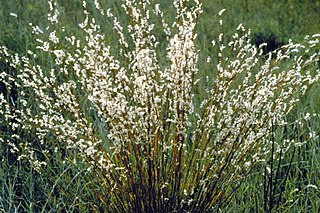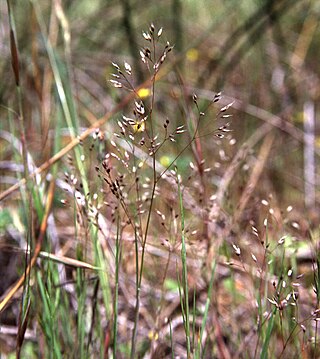Related Research Articles
The Reverend Doctor Christopher Syn is the smuggler hero of a series of novels by Russell Thorndike. The first book, Doctor Syn: A Tale of the Romney Marsh was published in 1915. The story idea came from smuggling in the 18th-century Romney Marsh, where brandy and tobacco were brought in at night by boat from France to avoid the tax. Minor battles were fought, sometimes at night, between gangs of smugglers, such as the Hawkhurst Gang, and the Revenue, supported by the army and local militias in South Kent and Sussex.
In Norse mythology, Syn is a goddess associated with defensive refusal. Syn is attested in the Prose Edda, written in the 13th century by Snorri Sturluson; and in kennings employed in skaldic poetry. Scholars have proposed theories about the implications of the goddess.

The Bibionomorpha are an infraorder of the suborder Nematocera. One of its constituent families, the Anisopodidae, is the presumed sister taxon to the entire suborder Brachycera. Several of the remaining families in the infraorder are former subfamilies of the Mycetophilidae, which has been recently subdivided. The family Axymyiidae has recently been removed from the Bibionomorpha to its own infraorder Axymyiomorpha.
The 4th Daytime Emmy Awards were held Thursday, May 12, 1977, on NBC to commemorate excellence in daytime programming from the previous year (1976). The live coverage held from Tavern on the Green restaurant in Central Park, New York. The fourth awards only had three categories, and thus three awards were given. Hosts were Peter Marshall, Chuck Woolery, Victoria Wyndham, Jack Gilford, and Soupy Sales with a special guest appearance by Gilda Radner of Saturday Night Live. Telecast from 3-4:30 p.m., the awards preempted Another World and The Gong Show.

The Andropogoneae, sometimes called the sorghum tribe, are a large tribe of grasses (family Poaceae) with roughly 1,200 species in 90 genera, mainly distributed in tropical and subtropical areas. They include such important crops as maize (corn), sugarcane, and sorghum. All species in this tribe use C4 carbon fixation, which makes them competitive under warm, high-light conditions.

Laeliinae is a Neotropical subtribe including 40 orchid genera, such as Brassavola, Laelia and Cattleya. The genus Epidendrum is the largest within this subtribe, containing about 1500 species. This is followed by the genus Encyclia, with over 120 species.

Alsophila is a genus of tree ferns in the family Cyatheaceae. It has also been considered to be a section in the subgenus Cyathea of the genus Cyathea.

Pitcairnia is a genus of plants in the family Bromeliaceae, subfamily Pitcairnioideae. It was named for William Pitcairn, Scottish physician and gardener (1711–1791). The genus Pitcairnia ranks as the second most prolific of the bromeliad family. They are most abundant in Colombia, Peru and Brazil, but can also be found in areas from Cuba and Mexico south to Argentina. One species, Pitcairnia feliciana, is found in tropical West Africa and is the only member of the family Bromeliaceae not native to the Americas.

A pearmain, also formerly spelled "permain", is a type of apple. The name may once have been applied to a particular variety of apple that kept well, although in more modern times its inclusion in varietal names was, like the term 'Pippin', "largely decoration" rather than indicating any shared qualities.

SYN is an Australian community radio station broadcasting to Melbourne, Victoria. First broadcast in January 2003, the station is operated by SYN Media under a youth license, with programming presented entirely by volunteers aged 12–25 years old. The station broadcasts from studios on the campus of RMIT University, with additional content syndicated from other community radio stations in Australia.

Student Youth Network Inc., operating as SYN Media, is an Australian youth-run not-for-profit organisation providing media training and broadcasting opportunities for young people. Commonly referred to as SYN, the organisation produces new and independent media that is made by and for young people in Melbourne. Founded in 2000, today volunteers – all aged 12–25 years of age – produce a radio station broadcast on FM radio and DAB+ digital radio, as well as content for television, print and online. A 2006 McNair listener survey showed a similar age group, 15–24, as the largest age group listening to community radio in Australia.

Doctor Syn is a 1937 British black-and-white historical dramatic adventure film, directed by Roy William Neill for Gainsborough Pictures. It stars George Arliss, Margaret Lockwood, Graham Moffatt, and Ronald Shiner. The film is based on the Doctor Syn novels of Russell Thorndike, set in 18th century Kent. The character of Syn and the events at the film's climax were both softened considerably in comparison to Thorndike's original storyline.

Stemonuraceae is a eudicot family of flowering plants.

The Poeae are the largest tribe of the grasses, with around 2,500 species in 121 genera. The tribe includes many lawn and pasture grasses.

Cynodonteae is a large tribe of grasses in the subfamily Chloridoideae, with over 800 species.